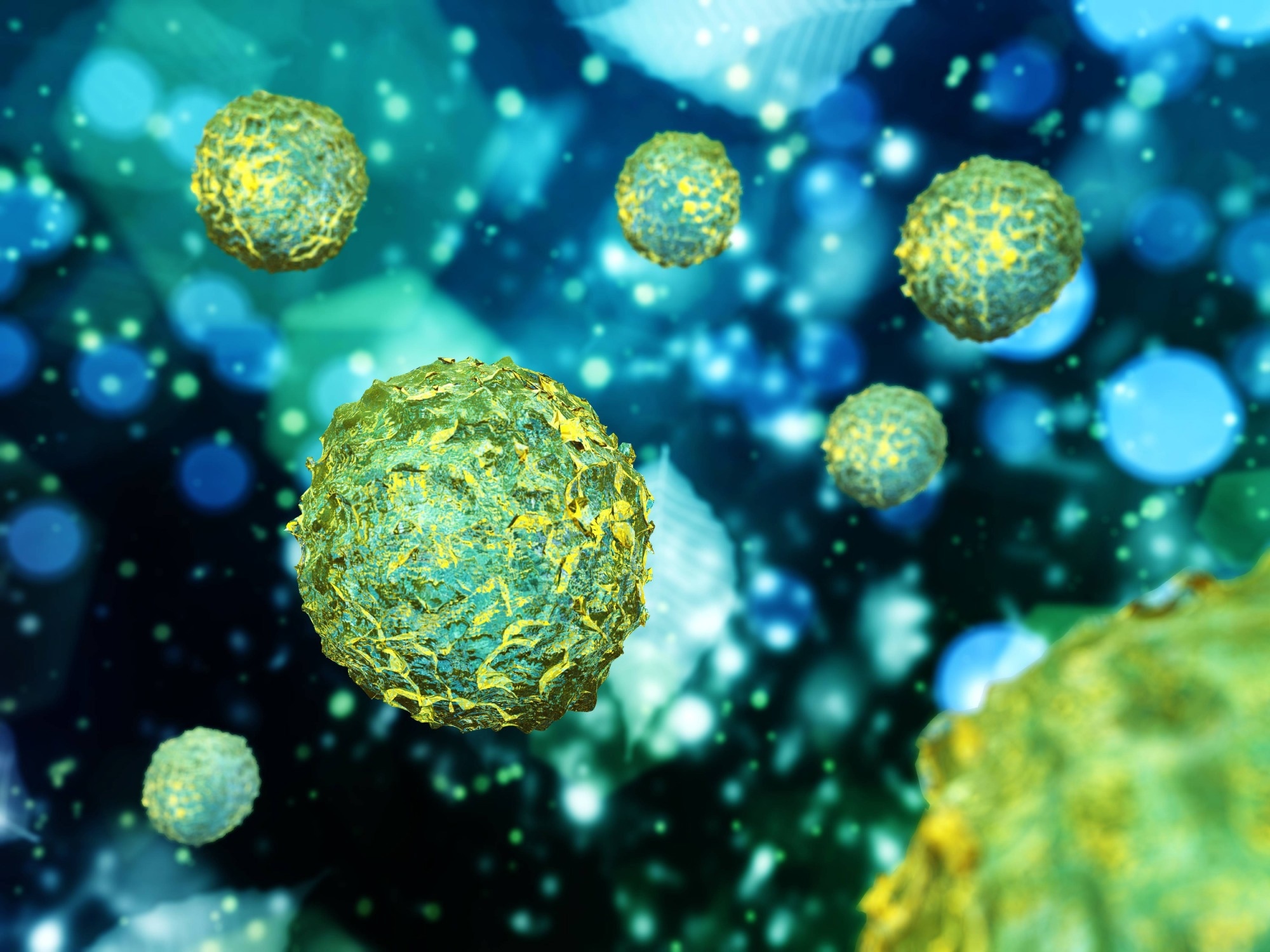In a recent study published in Nature Genetics, researchers performed an allelic-level single-cellular multi-omics evaluation of hematopoietic stem/progenitor cells (HSPCs) obtained from individuals with myeloproliferative neoplasms (MPNs) transforming to tumor protein 53 (TP53)-related secondary forms of acute myeloid leukemia (sAML).
 Study: Single-cell multi-omics identifies chronic inflammation as a driver of TP53-mutant leukemic evolution. Image Credit: ustas7777777/Shutterstock.com
Study: Single-cell multi-omics identifies chronic inflammation as a driver of TP53-mutant leukemic evolution. Image Credit: ustas7777777/Shutterstock.com
TP53 mutations are common in human cancers, often resulting in a point-type mutation with the loss of other wild-type alleles. The mutations are linked to structural variations and copy number alterations (can), affecting myeloid malignancies.
Understanding the biological mechanisms underlying TP53 mutations that lead to clonal evolutions and facilitate the progression of the disease is crucial for developing interventions to identify, stratify, manage, and prevent myeloid malignancies.
About the study
In the present study, researchers reported on chronic inflammation as a driver of TP53-mutant leukemic evolution, as determined by performing single-cell multi-omic analysis.
The team characterized the genomic landscape of individuals with TP53-sAML by preparing single nucleotide polymorphism (SNP) arrays and performing bulk targeted-type next-generation sequencing.
They carried out TARGET-sequencing analysis on 17,517 Lin-cluster of differentiation 34-positive (CD34+) hematopoietic stem/progenitor cells obtained from 14 individuals with TP53-sAML, nine similarly-aged healthy donor (HD) individuals, and eight individuals previously diagnosed with myelofibrosis (MF). Bi-allelic genetic mutations were verified by computational assessments and single-molecule cloning.
Index-sorting integration, CAN assessment using single-cellular transcriptomes, and diffusion map analyses were performed. The team analyzed single-cell ribonucleic acid sequencing (RNA-seq) data from 10,459 TP53-sAML HSPCs alongside 2,056 MF and 5,002 HD HSPCs passing quality control.
The team investigated whether the upregulation of erythroid-associated transcription was a more widespread phenomenon in TP53-mutant AML. TP53 in JAK2V617F CD34+ cells was knocked down from MPN patients, and the team investigated whether a single-cell defined TP53 multihit LSC signature could identify AML patients with adverse outcomes.
Molecular signatures of TP53-mutant-mediated transformation were analyzed, and scVelo analysis was performed. The team analyzed samples from five CP-MPN patients who subsequently developed TP53-sAML (pre-TP53-sAML) alongside six CP-MPN patients harboring TP53-mutated clones who remained in CP (CP TP53-MPN, median of four years of follow-up). Competitive murine transplantation experiments were performed between CD45.1+ Vav-iCre Trp53R172H/+ and CD45.2+ Trp53+/+ BM cells, followed by repeated poly(I:C) or lipopolysaccharide (LPS) intraperitoneal injections.
An inducible SCL-CreERT Trp53R172H/+ mouse model was established. Multiplex fluorescence in situ hybridization (M-FISH) karyotype analysis of Trp53+/+ LSKs expanded in vitro from murine animals was performed following poly(I:C) therapy and Trp53R172H/+ LSKs from mice with or without poly(I:C) therapy.
Bulk genomic deoxyribonucleic acid (DNA) from patient samples' mononuclear or CD34+ cells was isolated for targeted sequencing. Pathogenic scores for each TP53 variant were derived from the Catalog of Somatic Mutations in Cancer using the FATHMM-MKL algorithm.
Dominant hematopoietic stem/progenitor cellular clones were confirmed as functional LSCs by establishing patient-derived xenografts (PDX) from two individuals with TP53-sAML and sequencing them.
The team investigated erythroid-myeloid-associated transcription in BeatAML and The Cancer Genome Atlas (TCGA) cohorts and sorted the phenotypic hematopoietic stem cells from MF patients, TP53-sAML patients, and HDs for short- and long-term culture-initiating cells (LTC-IC).
Results
The findings indicated that chronic inflammation plays a significant role in the evolution of TP53-mutant HSPCs, enhancing their fitness advantage and promoting genetic evolution. TP53-sAML was associated with complex genetic heterogeneity and an immune fitness advantage among cells with monosomy 7, driven by activated signaling mechanisms related to chromosome 7 deletion.
The team characterized the predominant leukemic clones in TP53-sAMLs by TP53-related multiple-hit analysis, indicating strong and selective pressures for the complete wild-type TP53 loss, with complex cytogenetic evolution and CNA gains.
The findings underpinned an aberrant erythroid-biased differentiation trajectory in TP53-sAML, indicating that the CCAAT enhancer-binding protein alpha (CEBPA)/GATA-binding factor 1 (GATA1) expression ratio, an important transcription factor balance, was disrupted by the TP53 mutation.
The findings indicated that the p53LSC signature could be a powerful tool to aid risk stratification in AML. Phenotypically distinct and rare pre-LSCs were identified from TP53-sAML specimens, characterized by distinct stemness, self-renewal, quiescence signatures, and defects in differentiation.
The TP53 wild-type cells exhibited normal differentiation in the prolonged ex vivo cultures, indicating that the molecular and functional abnormalities could be mediated by cell-extrinsic activities.
The pre-LSCs exhibited enrichment of genetic signatures related to cell-extrinsic mediators of inflammation such as tumor necrosis factor-alpha (TNFα), interferon-gamma (IFNγ), tumor growth factor-beta (TGFβ), and interleukin-2 (IL2). Inflammation promoted TP53-related clonal dominance and the genetic evolution of Trp53-mutant HSPC.
The findings indicated that chronic inflammation promotes the survival and genetic evolution of TP53-mutated cells while suppressing WT hematopoiesis, ultimately promoting the clonal expansion of TP53-mutant HSPCs.
Conclusions
Overall, the findings revealed complex genetic, cellular, and molecular heterogeneity in TP53 mutation-driven disease transformation in AML. The study identified three distinct clusters of HSPCs in TP53-sAML, including one characterized by overexpression of erythroid genes associated with adverse outcomes and TP53 mutation.
The study also identified a p53LSC signature, which can predict outcomes in AML independently of TP53 status. The findings demonstrated a hitherto unrecognized effect of TP53 genetic mutations, conferring a fitness advantage to HSPCs in chronic inflammation.